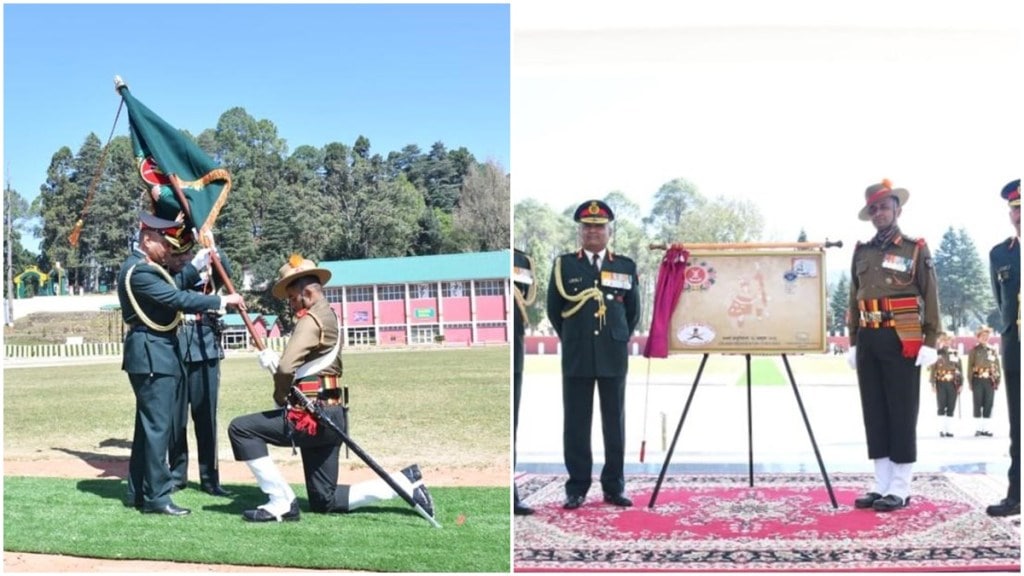On Friday, within the precincts of the Kumaon Regimental Centre (KRC) in Ranikhet, the 3rd Battalion of the Naga Regiment, commonly known as 3 Naga, received the esteemed President’s Colour award from the distinguished Army chief, General Manoj Pande.
This ceremony marks a pivotal juncture in the unit’s illustrious journey, a journey that has seen them earn numerous accolades and distinctions.
What is the President’s Colour?
The President’s Colour, often referred to as ‘Nishan’, is a cherished military tradition, a symbol of honour and tribute to the battalion’s remarkable achievements. It represents the collective spirit of the battalion, a spirit forged in the crucible of sacrifice and unwavering determination.
This tradition has its roots in the colonial era but took on a new significance on 23rd November 1950 when the ‘King’s Colour’ of the British Indian regiments was laid to rest in the Chetwode Hall, Dehradun. This gesture paved the way for the ‘colours’ of the President of the Republic of India, signifying the dawn of a new chapter.
The President’s Colour is typically presented by the President of India or, in her/his stead, by the Chief of the Army Staff. On this momentous Friday, Colonel Lalit Chandra Kandpal, the Commanding Officer of 3 Naga, was the recipient of this revered symbol.
More about 3rd Battalion of the Naga Regiment
The 3rd Battalion of the Naga Regiment, affectionately known as 3 Naga, came into existence on 1st October 2009 in the picturesque town of Haldwani, nestled among the serene Kumaon Hills, which have long been the cherished home of the Kumaon & Naga regiments.
At that time, a brief but significant ceremony was held at KRC, during which the regimental flag of the Naga regiment was handed over to Colonel (now Brigadier) Udai Jawa, the first Commanding Officer tasked with raising this battalion. The regimental flag was unfurled for the very first time at the Battalion Quarter Guard on that historic day in 2009.
Since its inception, 3 Naga has garnered a remarkable collection of awards and commendations, including one Vishisht Seva Medal, 11 COAS (Chief of Army Staff) commendation cards, 12 VCOAS (Vice-Chief of Army Staff) commendation cards, 37 GOC-in-C commendation cards, and one force commander (UN Mission) commendation card.
The President’s Colour is not just a ceremonial relic; it carries profound historical and symbolic weight. It goes back to ancient times when it was the standard, or ‘Dhwaj,’ of a king in the throes of battle. Each ruler or warrior possessed a distinctive flag, a banner that identified him and his forces. The loss or capture of this standard was tantamount to defeat.
In the chronicles of history, these flags were also revered banners of the valiant Knights of the Middle Ages. Even though the practice of carrying these colours into battle may have waned, the tradition of receiving, safeguarding, and parading them persists undiminished.
Naga Regiment
The esteemed Naga Regiment has a rich history. The first battalion, known as 1 Naga, came into existence on 1st November 1970 at the Kumaon Regimental Centre, under the leadership of Lieutenant Colonel RN Mahajan. At that time, it was the sole battalion and was designated as the Naga Regiment. Its personnel were drawn from the battalions of the Kumaon Regiment, Garhwal Rifles, and 3 Gorkha Rifles, with 69 Nagas directly enrolling from rehabilitation camps of underground Nagas.
The composition of the regiment was a reflection of the diversity of its regions, with 50 percent Nagas and the remainder being an equal mix of Kumaonis, Garhwalis, and Gorkhas. Given the historical ties that Kumaon battalions had with Nagaland, especially in the years preceding the formation of the Naga Regiment, it was affiliated with the Kumaon regiment for regimental affairs.
Subsequently, the second battalion, 2 Naga, was established on 11th February 1985 in Haldwani. A unique feature of the Naga Regiment is the integration of traditional Naga weapons such as the dao, spear, and mithun into the regimental crest.
The regiment’s colours, in the form of gold, green, and red, carry deep symbolism: gold symbolizes the rising sun, green represents the infantry, and red is the colour of authority among the Nagas.

